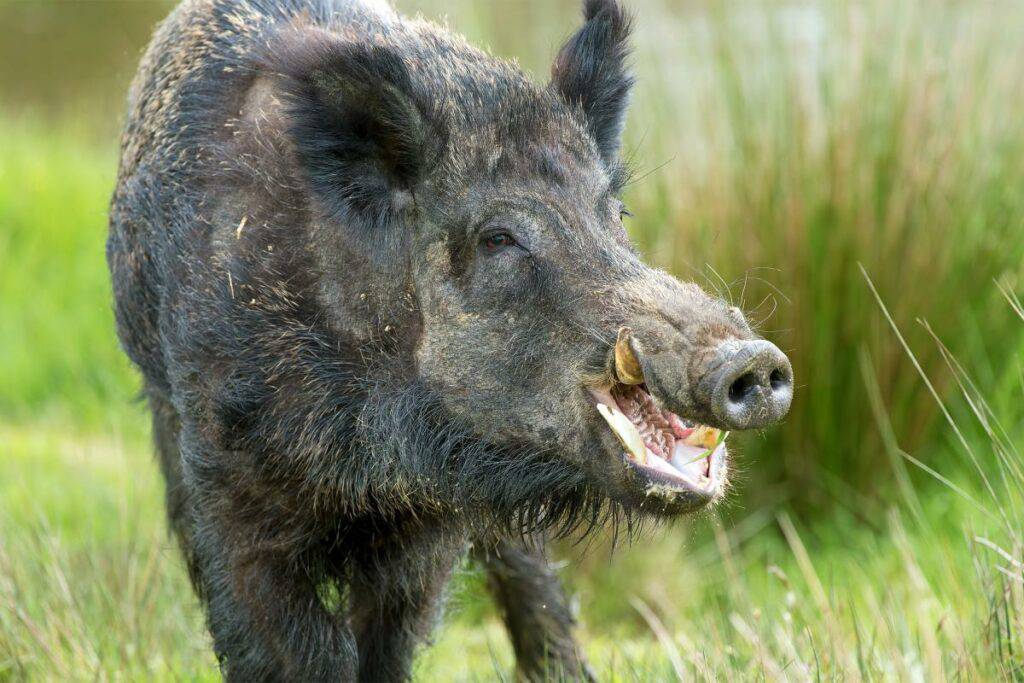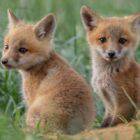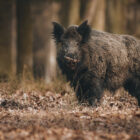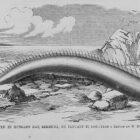Why is the Wild Boar so feared?

The wild boar is an animal that over millennia has not only played a significant role in the diet of our ancestors, but also acquired symbolic and religious importance due to its physical characteristics and the ferocity it demonstrates when forced to defend itself or the herd.
The wild boar (Sus scrofa) is a native Eurasian and North African swine that has spread widely across the temperate zones of the planet, also thanks to human intervention, to the extent that in modern times it is considered a pest animal in many regions of the world.
There are at least 16 subspecies of wild boar identified by science, divided into four regional groups characterized by skull structure and various morphological features.
Size and weight of the wild boar
The wild boar is a stout and robust animal, with short legs that do not hinder its ability to run up to 40 km/h and leap as high as 150 cm. Its muscular shoulders and neck have evolved for digging the ground and overturning stones: they can create deep furrows up to 10 centimeters even in frozen ground and relatively easily overturn heavy stones weighing up to 50 kg.
Due to high regional variability and pronounced sexual dimorphism, it is difficult to establish an average size for wild boars: males from Mediterranean regions generally reach 80-100 kg in weight and 80 cm in shoulder height, while those from Eastern Europe can grow as large as brown bears, exceeding 200 kg in weight and reaching 120 centimeters in height.
It is reasonable to assume that Pleistocene wild boars were even larger: some adult male specimens documented in modern times in Manchuria and Siberia exceed 300 kg in weight.
Giants of this kind are rare nowadays due to intensive hunting over the centuries that prevented the most promising specimens from reaching full growth, but in ancient times, individuals of that size were probably more common than today.

The senses and weapons of the wild boar
The most developed sense of the wild boar is its sense of smell, so acute that it is used in Germany for detecting illegal substances. Its hearing is also highly developed, but its vision is so weak that it cannot recognize a human being at a distance of 15 meters.
The snout (or rostrum) of the wild boar is a cartilaginous sensory apparatus with extreme mobility and precision. It is an organ rich in nerve endings and is used to feel the ground and perceive odors accurately.
The characteristic that most frightened our ancestors was their tusks: the lower canines of males grow continuously throughout their lives, are 10-20 centimeters long (but can grow up to 30 cm), and are as sharp as razors.
During the mating season, males develop a hard subcutaneous protective tissue behind each shoulder, called a “shield“, up to 3 centimeters deep, in order to defend themselves from the tusks of other contenders. Regardless of sex or season, wild boars’ skin is poorly vascularized and rich in fatty deposits, a defensive system that protects them from insect stings, wounds caused by undergrowth plants, and snakebites.
Lifestyle and diet of the wild boar
The wild boar is a social animal that lives in herds led by a matriarch, who guides and protects the sows and sterile females in tow. Each sow can give birth to 4 to 12 piglets every 4-5 months, nursing them for about 3 months.
During nursing, competition among wild boar piglets is fierce: there are not always enough teats to feed everyone, and some will grow faster and stronger than others, while the unlucky ones will succumb to malnutrition.
The wild boar easily adapts to many habitats that meet these requirements:
- Areas densely populated with bushes and trees, to hide from predators: although fierce in defending itself, it prefers to avoid conflicts if possible by hiding in the undergrowth;
- Water to drink and wash: wild boars do not sweat, so they use water to lower their body temperature and get rid of insects and parasites, sometimes covering themselves in mud to avoid sunburn;
- Absence of regular snowfall: wild boars encounter some difficulty in moving in deep snow, making it easier for their natural predators.

Wild boars therefore prefer wet forests composed mainly of beech and oak, but they also easily adapt to coniferous forests. They eat anything they can put in their mouths, literally: although their diet is mainly vegetarian, during their digs in search of roots and tubers, they do not disdain earthworms, bird eggs, frogs, rodents, and other small animals.
Their favorite foods are seeds, nuts, acorns, and berries, but during colder periods, “anything goes”: an adult wild boar weighing 50 kg needs at least 4,000 calories a day during the warm seasons, even more during winter or pregnancy. Wild boars living along the Volga Delta have been observed several times feeding on carp, herons, and mollusks, sometimes even killing prey themselves.
The wild boar in history
During the Pleistocene, wild boars were among the preferred prey of mountain lions, tigers, gray wolves, dire wolves, smilodons, and bears. Wolves are still the main predators today: a single individual can kill up to 80 wild boars a year (generally sows, piglets, or subadults), especially during winter when deep snow limits the movements of the swine.
In Siberia, on the other hand, the tiger is the primary predator: it pursues Siberian wild boars longer than any other prey, does not distinguish between adult males and easier-to-hunt specimens, and can kill over 30 wild boars a year.
Throughout ancient history, the wild boar was a formidable opponent but also a very valuable prey: it supplied the entire community with meat, fat, leather, and bones, essential materials for the survival of hunter-gatherer communities.
An adult wild boar can provide several tens of kilograms of meat, bones in quantity, and resistant skin; it was probably these reasons that led our ancestors to domesticate wild boars over 15,000 years ago, selecting them until they arrived at the domestic pig: having such a large and prolific meat animal close to home, tame and cooperative because raised in captivity since they were piglets, was a huge advantage compared to the risk of hunting them in their territory.
Embodiment of Strength and Courage
The relationship between humans and wild boars is much more than a predator-prey relationship. In any culture where wild boar hunting is present, this animal represents the embodiment of brute strength and courage.
Almost every hero of Ancient Greece, for example, killed at least one wild boar in their life; myths and legends related to the wild boar are also common in Ancient Egypt, Scandinavian cultures, India, and Japan. In the Land of the Rising Sun, the wild boar is a symbol of courage and prosperity and arouses so much admiration that some hunters name their children “Inoshishi” (wild boar) in honor of the animal.
Hunting an adult wild boar in ancient times was no joke and was a collective activity that required the collaboration of at least half a dozen people. The most common method in ancient Rome was to chase it, trap it using nets, and pierce it with a wild boar spear, a weapon equipped with a crossguard to stop any charge from the animal while mortally wounding it.
In medieval Europe, wild boar hunting became a demonstration of valor and martial discipline for the nobility of the time. The wild boar, chased and cornered by a pack of hunting dogs, was killed with a short sword or a wild boar spear; before its departure, it was not uncommon for it to kill or seriously injure some hunting dogs with its tusks.










